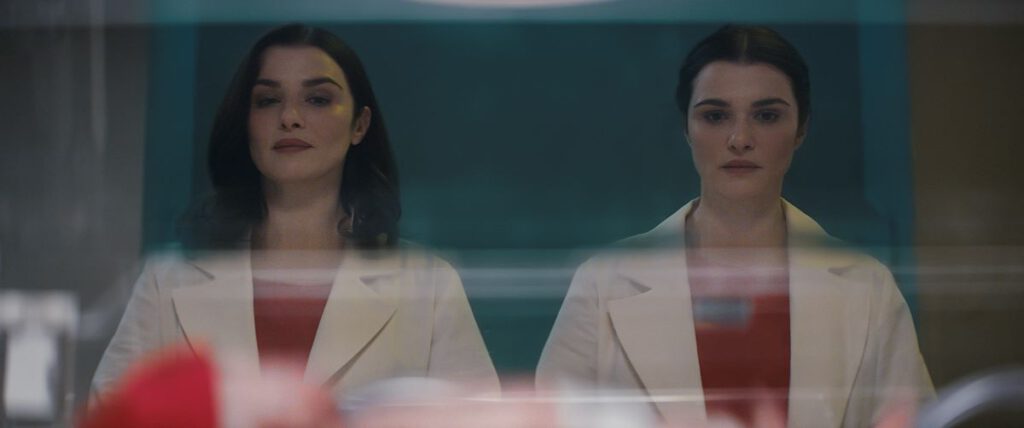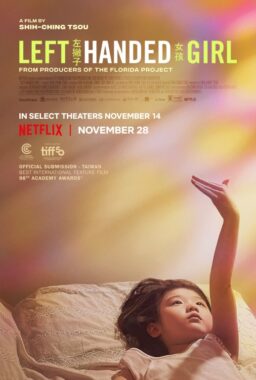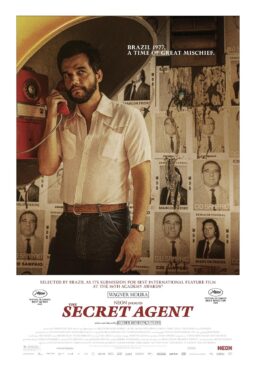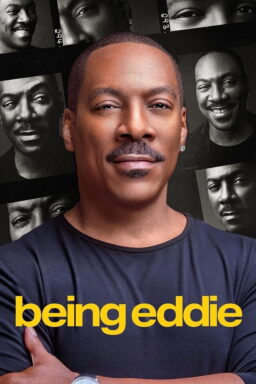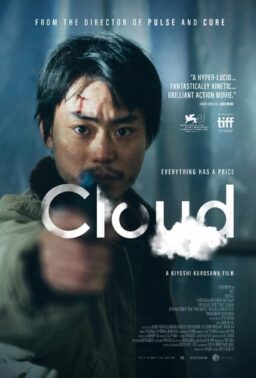In 1983, Phillip Brophy coined the term “body horror” in his article “The Textuality of the Contemporary Horror Film” in order to address what he saw as a “golden period” of contemporary horror films that distinguished itself from previous eras. One of the things he noted was a prolific trend about “the destruction of the Body. The contemporary Horror film tends to play not so much on the broad fear of Death, but more precisely on the fear of one’s own body, of how one controls and relates to it.”
This type of horror revolves around the transformation or mutation of the human body through disease, virus, infection, parasites, medical experimentation, or through some supernatural or extraterrestrial force. It is about change generated from within the body rather than a monster or serial killer committing violence to a body.
In film, body horror has a very male lineage starting in the 1930s with Universal Monsters’ “Frankenstein” and “The Mummy,” continuing with the science-gone-wrong films of the 1950s such as “The Fly” and “The Incredible Shrinking Man,” And then peaking in the 1980s with David Cronenberg’s “Scanners” and “Videodrome,” Stuart Gordon’s “Re-Animator,” and Clive Barker’s “Hellraiser.”
But you could say the genre of body horror was mothered by Mary Shelley and her Frankenstein novel back in 1818. Although the story was about a man and a male monster he creates from dead parts, it is also driven by a very female sensibility about creating life. Shelley wrote the story when she was 18 years old; two years after giving birth to a baby she did not name because it died. Her grief prompted fevered dreams that she described in her diary: “Dream that my little baby came to life again; that it had only been cold, and that we rubbed it before the fire, and it lived. Awake and find no baby.”
Last year’s Prime Video series “Dead Ringers” taps into both this female origin of body horror as well as into Cronenberg’s 1988 classic.
Actress Rachel Weisz was a fan of Cronenberg’s “Dead Ringers.” She looked at the material—a story of twin brother gynecologists—and thought it was ripe for a gender flip. She then enlisted Alice Birch as the series creator, writer, and executive producer. Birch credits Weisz with getting the ball rolling on this reimagining of Cronenberg’s film.
“There’s so much about the tone that’s so interesting, and it looks so amazing, and there was lots that I felt we could really steal from,” Birch said.

And steal they did, but from an inspired new point of view that was distinctly female on multiple levels.
The series is based on both Cronenberg’s 1988 film and the 1977 book Twins by Bari Wood and Jack Geasland. The book was inspired by the real-life twin brothers Stewart and Cyril Marcus, gynecologists found dead together under mysterious circumstances in Cyril’s Manhattan apartment in 1975.
In the series, the Mantle twins are now sisters played by Weisz. They are also obstetricians as well as gynecologists, with Beverly dedicated to the idea of creating a new kind of birthing center for women, and Elliot focused on radical and potentially unethical research in the areas of treating infertility. This allows the show to give the body horror a fresh female spin. Not only are there key women behind the camera but the show focused on lead (and deliciously flawed) female characters who have agency in a story focused on women’s bodies.
And because they are OB-GYNs, they get to focus very specifically on pregnancy and birth. On a certain level, pregnancy is a kind of body horror since it involves a physical transformation that is out of one’s control because a woman cannot dictate the gender or health of the fetus inside her. It also involves a new being living inside a woman’s body, which when you think about it is kind of weird and creepy. Most of the time this is a welcomed and joyous experience but it is also something that can be terrifying when something goes wrong.
One of the clever things the show does early on is it presents women’s bodies in ways that we do not usually see—pregnant, giving birth, cut open for C-sections—because such images can make people uncomfortable. And discomfort is a key aspect of body horror. Men, and even many women, don’t want to see a bloody birth canal or a baby being pulled out of a vagina. We are used to seeing women’s bodies as sexy—not in this medically graphic way. None of these images are sexy, especially when presented in a montage of screaming women and exhausted doctors covered in blood. If movies do show births, they tend to favor freshly scrubbed, cherubic babies. Rarely do we see intimate shots of babies crowning and emerging bloody from the womb or graphic C-sections.
But that was important to Birch: “It was there from the scripts, from the very beginning. As soon as we knew that they [the Mantle twins] would work in obstetrics, then I think we knew that we were going to be depicting childbirth. And it was just about what was interesting to us. Like you said, I’ve never really seen that on screen, and so I felt interested. We see violence all the time. We see death all the time on screen. [Childbirth] is how we all arrived into the world and we never, ever see it. And I find that very interesting.”
It is also interesting how the show explores women’s bodies in terms of how they are viewed and treated within health care. While body horror is usually about a physical change generated from within, “Dead Ringers” suggests there’s a level of horror involved in how little control a woman may have over her own body within the health care industry.

The series explores what it is like to be a pair of women doctors advocating for bold new ideas about women’s health care. It places them within a medical profession designed mostly by men, and having to pitch wealthy, profit-driven investors to get funding for a new birthing and research center. This broader context allows the series to tackle ideas about women’s health and challenge how we perceive those issues. It finds a new kind of horror in what the Mantle twins face in challenging the status quo and trying to get the health care industry to recognize the particular needs of a woman’s body.
Beverly likes to point out that “pregnancy is not a disease,” and the kind of medical attention pregnant people receive should reflect that. So on one level the show comes off as a feminist challenge to stereotypical ideas about women’s health and reproductive freedom. Elliot is as eager to try and help a woman conceive as she is to abort an unwanted fetus, and in light of the recent overturning of Roe V. Wade, that may be considered radical.
Cronenberg’s film culminates with Beverly designing and commissioning a set of “Instruments for Operating on Mutant Women”—bizarre and ominously biomechanical tools (think H.R. Giger) that frighten and hurt his patients. Beverly dismisses complaints by saying, “there’s nothing the matter with the instrument… it’s the women’s bodies that are all wrong.”
The series ditches this idea, which worked brilliantly in the context of Cronenberg’s male-centric film, to reflect Beverly’s mental deterioration. But it preserves the horrific idea of men operating on women in a manner than is oblivious to the harm they may be causing.
The most chillingly disturbing episode involves some real medical history. The Mantles are introduced to a beloved Southern doctor who is presented as a champion of women’s health. Dr. Marion James (played by the immensely likable Michael McKean of TV’s “Laverne and Shirley”) brags about one of his ancestors who “partnered” with a patient to discover new means of surgery for women.
The episode, directed by the talented Karyn Kusama, draws on historical fact. Dr. Marion James takes his name from Dr. James Marion Sims, credited as the “father of modern gynecology.” Sims developed pioneering tools and surgical techniques for women’s reproductive health, but his research was conducted on enslaved Black women without anesthesia because racist thinking at the time was that the Black women did not feel pain the way white women did.
The episode never shows the surgery but has Dr. James describe it in a very matter-of-fact manner that makes the woman seem a willing participant. He sees absolutely nothing wrong with how the medical advances were achieved. The end justifies the means for him.

But later in the episode, Beverly imagines seeing a young Black woman who repeats the story with an emphasis on how a 17-year-old enslaved Black woman “was operated on 30 times without anesthesia.” The repetition of this information makes it impossible to ignore and each time we hear the phrase the horror becomes more vivid. The body horror takes on a very visceral and angry tone as we are made aware of a chapter in medical history that may not be widely known.
The show also provides a more visual sense of body horror as it moves from showing women’s bodies as life giving to something more sinister. We see Elliot in the laboratory creating life in a test tube and growing fetuses outside of the womb. It is clandestine work that society has deemed unethical, and Elliot’s success endows her with an arrogance that starts to slip into sci-fi horror. She is like Shelley’s Dr. Frankenstein—a scientist who sees herself as above society’s laws and like a god creating life from nothing. Her character also harkens back to the body horror of the 1950s science-gone-wrong films but with a distinctly feminine bent.
Birch explained, “We begin in a place that’s really grounded and recognizable. Then we end up in somewhere that’s really quite heightened and strange and operatic. People are doing things that I think, had we started in that place, it would have felt far-fetched, but hopefully the time that we had means that we can get there in a way that feels kind of natural.”
Elliot’s experiments and the female body horror eventually extend to the twins themselves. Beverly’s multiple attempts to conceive result in multiple tiny, bloody fetuses being rejected from her body. And in the end, there is a surgery/mutilation that provides the logical conclusion to this twisted tale.
There is also an interesting side plot involving the Mantles’ assistant Greta (played by Poppy Liu). Throughout the series Greta is seen collecting weird things (like used tampons) from the twins and especially from Beverly’s failed pregnancies. It is all very mysterious until the final episode where we discover she is an artist using the items collected to create an installation piece about her own birth, which caused the death of her mother. It shows how art can be a way to deal with trauma, and this particular trauma relates to the body horror of pregnancy. Greta is traumatized by her mother’s death in childbirth whereas Shelley was traumatized by her child’s death.
“Dead Ringers” reveals how to do both a remake and a gender flip right. Both must be fueled by a vision to reimagine something from a fresh new perspective to say something original. This “Dead Ringers” gives us flawed female characters who give birth to a newly invigorated and femme-centric body horror.
